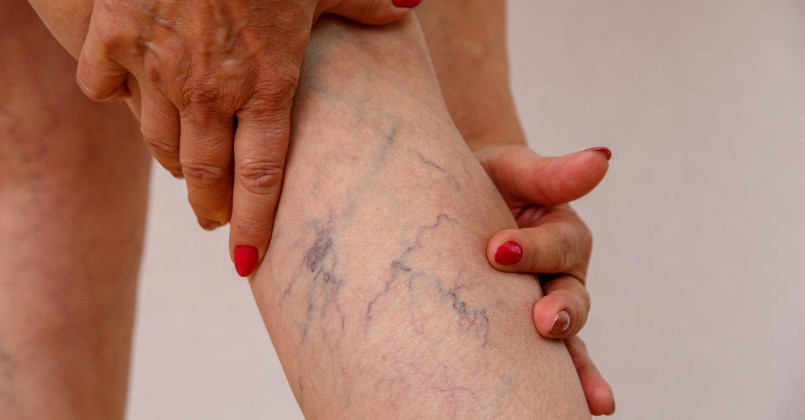Between 30 and 60% of adults have varicose or spider veins — so if you are experiencing them, rest assured the condition is not uncommon.
Varicose and spider veins occur naturally based on certain circumstances, and do not have to hinder your summer enjoyment. There are a few ways to treat and prevent these venous diseases as the weather warms up.
What are Varicose and Spider Veins?
Varicose and spider veins are both venous diseases, but they have a few distinct differences:
Spider veins are small, and can sometimes appear at first glance as though they were drawn on your leg with either a red, purple, or blue colored pen. They may cause some itching or discomfort, but they do not swell, and won’t cause harm to your circulatory system.
Varicose veins, on the other hand, bulge from under the skin, and are both more uncomfortable and concerning. “Varicose veins cause fatigue of the legs, swelling and general discomfort. They can also be a warning of long-term health risks including: deep vein thrombosis, blood clots, poor circulation and leg swelling,” Luis Navarro, MD, founder and medical director of The Vein Treatment Center in New York City tells Woman’s Day. They may also be a symptom indicating Chronic Venous Insufficiency (CVI), which prevents proper blood flow to your heart, so it is important to discuss varicose veins with your doctor.
What Causes Varicose and Spider Veins?
Varicose and spider veins are both caused by complications in the circulatory system. Your veins normally have one-way valves that help your blood flow throughout your body. If these valves do not close properly, it can cause blood to flow backward, unable to reach the heart, and consequently enlarge the affected vein or veins.
How Can You Treat Varicose and Spider Veins?
If you have a mild case of spider or varicose veins, your doctor may suggest compression socks (or compression stockings) specifically designed to fit snugly around your legs and promote blood flow. This lessens the visibility of varicose or spider veins.
Maintaining a healthy weight, staying active, and reducing the salt in your diet can also reduce the swelling of your veins.
If at-home treatment doesn’t provide results, your doctor may recommend a non-surgical procedure called sclerotherapy. This procedure involves the injection of a saline solution to slowly reduce the appearance of the veins over three to six weeks.
Other options to treat these venous diseases include:
- Endovenous laser treatment: Pulses of laser light are administered to collapse the affected vein.
- Radiofrequency closure: A radiofrequency is delivered to the affected vein wall via a catheter, causing the vein to heat up, collapse, and seal shut.
In extreme cases, your doctor may suggest a more invasive surgery, which involves tying off and removing the impacted vein with small incisions. This surgery is usually an outpatient procedure involving local, spinal, or general anesthesia, and without the need of stitches.
How to Prevent Varicose and Spider Veins
If you do not currently have either spider or varicose veins, but wish to prevent them before the summer, consider these tips:
- Avoid sitting or standing for long periods of time
- Periodically keep your legs elevated
- Maintain a healthy weight
- Quit smoking tobacco
- Periodically use compression socks
- Avoid tight-fitting clothing
The professionals at Vascular Surgical Associates can help answer any further questions you may have regarding spider or varicose veins. We’re eager to help you find the best treatment for your condition, and give you tips for prevention in the future. Visit us online to schedule an appointment, or call us at 770-423-0595.





